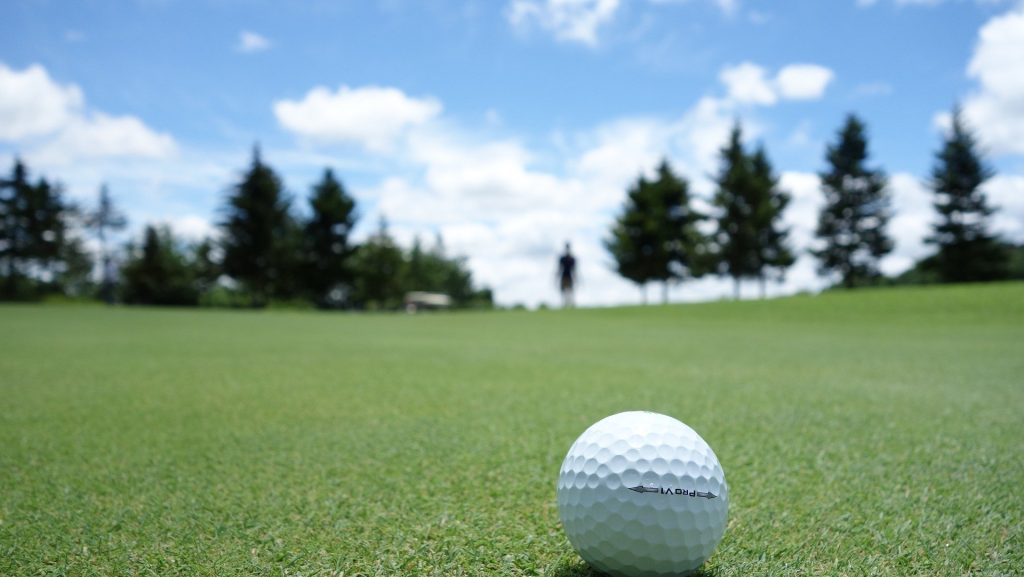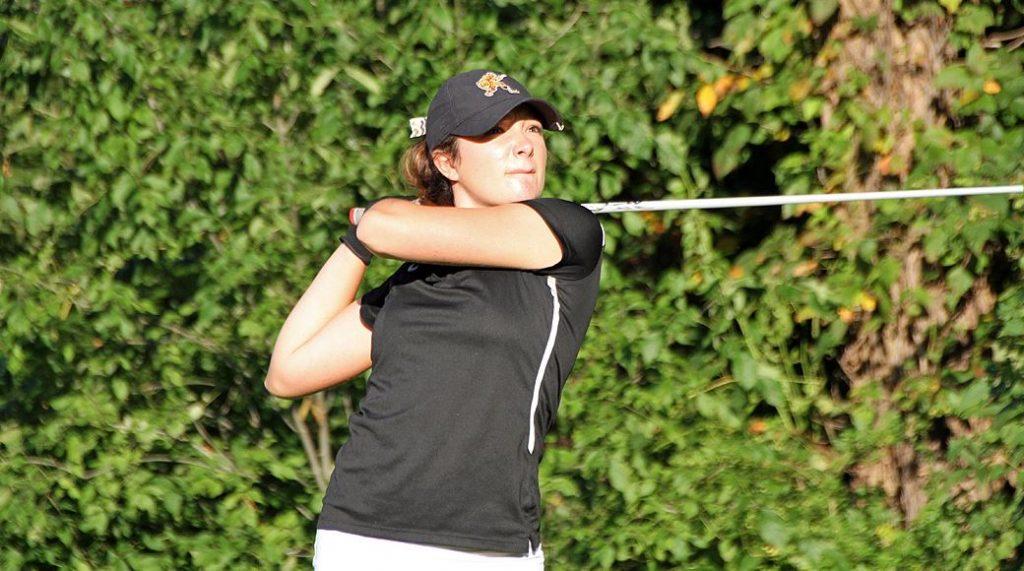“As we all know, golf is a puzzle without an answer.”
Anyone who has ever played the age-old game can understand, and even sympathize, with this insight from the legendary Gary Player.
Throughout its rich history, golf has continuously managed to baffle, consume and amaze anyone who dare pick up a club.
Many have sought the key to finding the perfect method of playing the game, but few, if any, have unlocked the answer.
“The bottom line is getting people to make contact with the club square,” Gannon University women’s golf coach Jason Willow said.
The strategy involved with hammering a small white ball squarely on a slightly larger golf club face is as vital to success as the strategy to find the end zone in football.
And just about every professional will agree that it all begins with the most basic fundamental of the game: the swing.
Golf pros submit to many schools of thought when it comes to the swing. While many gravitate toward a classic, athletic way of ball-striking, others try to perfect a strategic and tactical approach to manipulating the ball.
Watch any golf tournament, and the assortment of methods is as unique as the golfers themselves.
“With golfers, they are very personal about their game,” Gannon men’s golf coach Ryan Paris said. “I want the players to ask me, because every one of them is an individual, and you can’t make the mistake of thinking that what works for one player is going to work for another. It’s really up to that player.”
However, professionals agree that there are several time-tested techniques that are common among most competent golfers.
Most being the key word.
According to traditional thought, the grip, as well as the golfer’s positioning in relation to the ball, is the basis for an effective swing. The way in which a golfer sets up to the ball determines the shot’s accuracy and distance of the shot.
Dan Steen, who has been the director of golf instruction at Lake Erie Golf Range for the last 15 years, said he’s a firm believer that the grip dictates the rest of the swing.
“The grip is the most important part of any swing, and from there, the stance, posture and ball position will rely on that,” said Steen, who serves as coach for the Mercyhurst College women’s and Villa Maria Academy girls’ golf teams.
Paris, who served as an instructor at the Arnold Palmer Golf Academy in Orlando, Fla., from 2003 to 2005, concurred with Steen, and said he has The King to back him up.
“When I worked down in Florida, we tried to use the way Arnold Palmer played as a model, and utilized the principles he learned in his experience,” Paris said. “So, the most important things as soon as you look at a swing are the grip, stance and posture.
“If those three things come together, it’s a solid golfer. First and foremost, these are the most important.”
Many of the same principles used by legends like Palmer can still be seen on the PGA Tour today.
“We use a stronger grip,” Paris said. “You’re in an athletic stance with your knees bent, but not quite on your toes, but more on the balls of your feet, just so you can make a solid move downward on the ball.”
Palmer’s grip, in which he held his hands slightly to the right on the club, isn’t the only example of a revolutionary technique popularized by a golf immortal.
Ben Hogan, who is regarded as one of the game’s greatest ball-strikers, is widely credited with introducing and perfecting the one-plane golf swing, which has become increasingly prevalent among golfers and instructors in recent years.
Under the one-plane system, golfers use a similar plane on the downswing as they do on the backswing.
The swing attempts to generate torque by rotating the golfer’s shoulders and upper body around a significantly bent-over stance.
The one-plane swing also utilizes a strong to neutral grip in an effort to minimize swaying in the hands and allow the natural movement of the swing to guide the club face.
Steen said the one-plane swing has come into vogue mostly due to its practicality.
“The more modern swings are generally a little flatter, and try to swing around, whereas the old-fashioned swing is a more up-and-down approach,” Steen said. “Guys like Rory McIlroy and Matt Kuchar tend to swing on an even plane, and hit through the ball.”
“I’d rather have a player with their hands go around their body. It’s more the fact that you want to hit to a target somewhere, so you should probably keep your swing more circular more so than a two-plane swing.”
The two-plane technique primarily depends on timing and rhythm, as the swing will come down on an inside plane, and rely on the rotation of the hands and arms to move the ball from left to right. This swing is largely reliant on leverage created by the downward action.
Tom Watson and Jim Furyk are among the dying breed of Tour professionals who still use a two-plane swing.
But the nuances don’t stop there.
In recent years, an increasing number of exotic swings have sent conventional thinking into the rough.
The most notable of these is undoubtedly the stack-and-tilt method.
The stack-and-tilt is based on a geometrical swing that attempts to make optimum contact off the club’s face. The swing deemphasizes the grip and set-up, but instead focuses on a circular, free-wheeling swing.
Still, even with the wide range of swings out there, most pros and instructors tinker with a variety of techniques before forming their own personal philosophy.
Paris maintains a pragmatic approach.
“The swing that I try to teach is a compact swing,” Paris said. “I try to teach a very concise and consistent approach. There is very little movement in the swing, because the more movement, the more room for error.
“It opens up a whole can of worms when you throw in those extra moving parts, so if you are able to minimize them, it makes for a more consistent swing.”
However, most instructors will agree one swing does not fit all.
“As far as teaching a certain way, I don’t try to make every golfer into the same player,” Steen said. “I have some golfers that are physically handicapped, and some with bad backs, and they can’t do the same things in a swing other golfers can. I have one golfer who only has two fingers on his hands, so we have to use a cross-handed grip.
“Each golfer is different. What I try to do is to get every golfer to release the club in their swing. It’s just like throwing a baseball—for everyone, the golf club has to be released.”
For women, a wider stance and taller spine angle can increase power, according to Gannon sophomore Bhanisha Nagindas.
“My mentor back in Canada is always saying that our swings are different,” the Ontario native said. “She says that we have a different stance to get as much length as possible.”
Whether they have different planes, release points and shoulder turns, all swings actually do have one thing in common: a golfer making them.
Willow, who is the owner and operator of Competitive Edge Performance Systems, which offers performance enhancement through mental training, examines the psychological aspect of the game in an effort to bridge the technical and mental sides.
“The one thing with golf is that a ball is going to go a certain way because of some reason,” Willow, who is also the director of sport and exercise science at Gannon, said. “It’s very consistent in that there’s a reason why it’s all of a sudden doing a certain thing.”
For a struggling golfer, all the swing training in the world can get thrown by the wayside on the course.
However, thinking too much on the course can be a greater hazard than the water on 17 at TPC Sawgrass.
“When you get more experience, you realize how much of the game is mental,” Gannon senior golfer Dom Lombardi said. “A lot of times you think you have it figured out, and that’s just not the reality.
“The worst thing that can happen is for you to think about it too much during a round. You love to stay away from it, but sometimes you have to if you’re slicing your driver, or you’re chunking your wedges. You have to make some kind of change.”
Willow agreed that on-the-course adjustments could spell trouble.
“Whenever my girls are warming up on the range before a tournament, and they are slicing it or hooking it, I tell them ‘play that way on the course until it goes away.’
“What I don’t do is try to change a swing in the middle of a round. You want to get it to a point where you can use your body, and take the brain out of it as much as possible.”
But for guidance to fall back on while shooting out the bunker or facing a 15-footer for par, any golfer will tell you that conferring with a swing coach is one of the first steps toward success on the course.
“If you’re learning to play golf, you should really get some coaching just to make sure you’re on the right track,” Lombardi said. “Even if you’ve been playing for a while, and you’ve got a pretty good grasp, it really helps to have some input from the outside.”
However, instructors will agree that most important is an emphasis on a fundamental aspect of the game: progress.
“Our goal on the second day is always to be better than we were the day before,” Willow said. “In fact, we have cheers sometimes that we do before a tournament, where we just chant ‘Be better.’”
Nagindas, who placed second in last weekend’s Pennsylvania State Athletic Conference’s women’s golf championships, said the positive thinking is a reason for the team’s success.
“When you have a round behind you, it’s always important to just get better the next day,” she said.

















